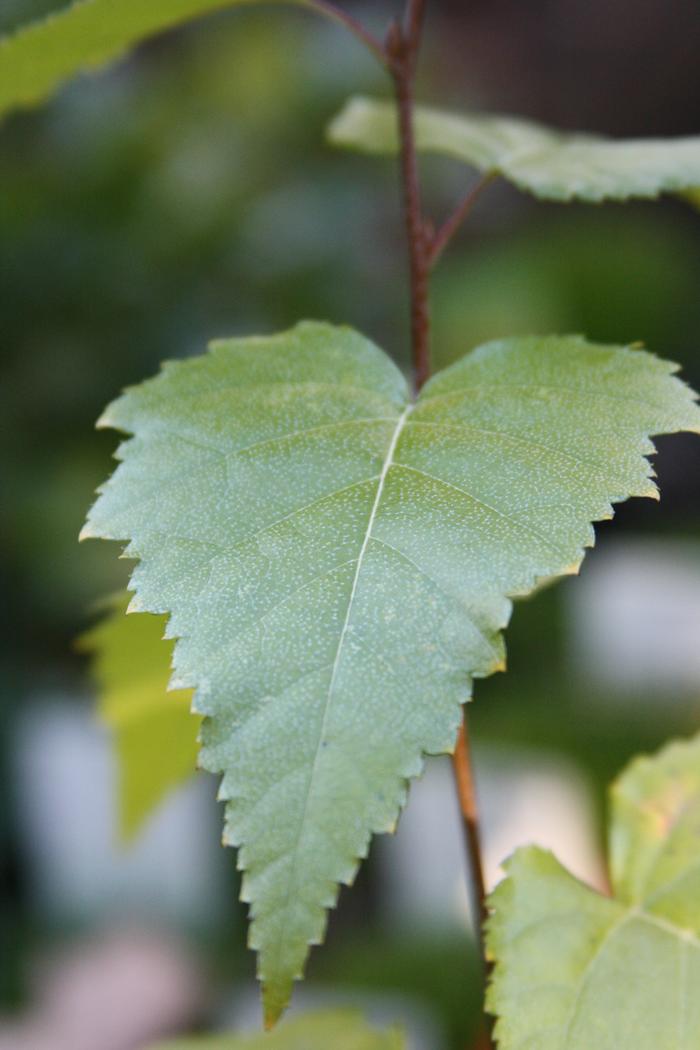General Description
Bloom Description: Blooms in April-May. Flowers are beautiful green catkins that swing in the wind.
Growth Habit & Shape: Gray birch is a small tree that can be single or multi stemmed. It often has a conical or pyramidal shaped crown and is a short-lived tree. The silvery-white bark does not peel and provides winter interest in many garden settings.
Soil Preferences: Gray birch is very versatile. It can do well in nutrient poor, dry and gravelly soils and richer, well-drained, moist soils.
Root Description: Shallow, fibrous root system.
Garden Uses: Shrub and tree borders, naturalistic gardens, and naturalized areas. Looks wonderful mixed with other early-flowering trees and can grow in less-managed sites thanks to it's tolerance of drought and disturbance.
Best Management & Maintenance: Minimal pruning necessary, particularly with single-leader trees. Can be regeneratively pruned (cut to the ground or coppiced), especially if multi-stemmed habit is prefered. Snow load can be a concern; tie leaders together or shake off heavy snows to protect from bending and snapping, particularly if multi-stemmed.
Common Problems: None.
Benefits
Ornamental Value: Grey birch has attractive white bark that creates interest all year, but particularly in the winter. Light green new foliage and catkins swaying in the wind are beautiful in the spring. Clean, yellow fall foliage is beautiful.
Wildlife Benefits: Birches are important host plants, supporting hundreds of butterfly and moth species. Gray birch is a host plant for the mourning cloak butterfly (Nymphalis antiopa), one of the first butterflies to emerge in the spring. They are important for birds as well, since almost all bird species rely on insects to raise their young.
Other Practical/Environmental Benefits: Could be useful for erosion control or slope stabilization due to it's tolerance for disturbance and tough conditions, fast growth rate, and fibrous root system.
Use in place of:
Ecology
Habitat:
Per the USDA, gray birch is an early colonizer of poor sites, road cuts, and burned areas. It is listed as a common associate of the aspen-birch and beechbirch-maple communities in the northeastern hardwood forest.
Response to Disturbance: Grey birch is adapted to fire-prone habitats; if the tree is cut or burned to the ground it will readily resprout from the roots.
Native State Distributions:
Canada: NB, NS, ON, PE, QC
USA: CT, DE, IL, IN, MA, MD, ME, MI, NC, NH, NJ, NY, OH, PA, RI, VA, VT, WV
Wetland indicator status: FAC
Companion Plants:
Serviceberry (Amelanchier spp.), hollies (Ilex spp.), hazelnut (Corylus spp.), viburnum (Viburnum spp.), and pitch pine (Pinus rigida)
References
Return to Top

